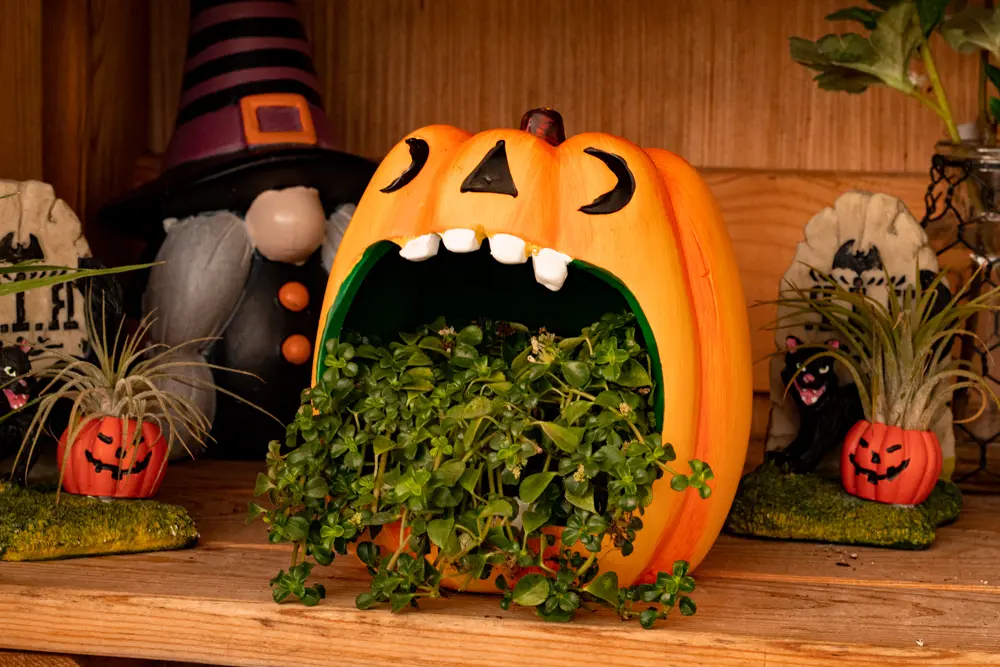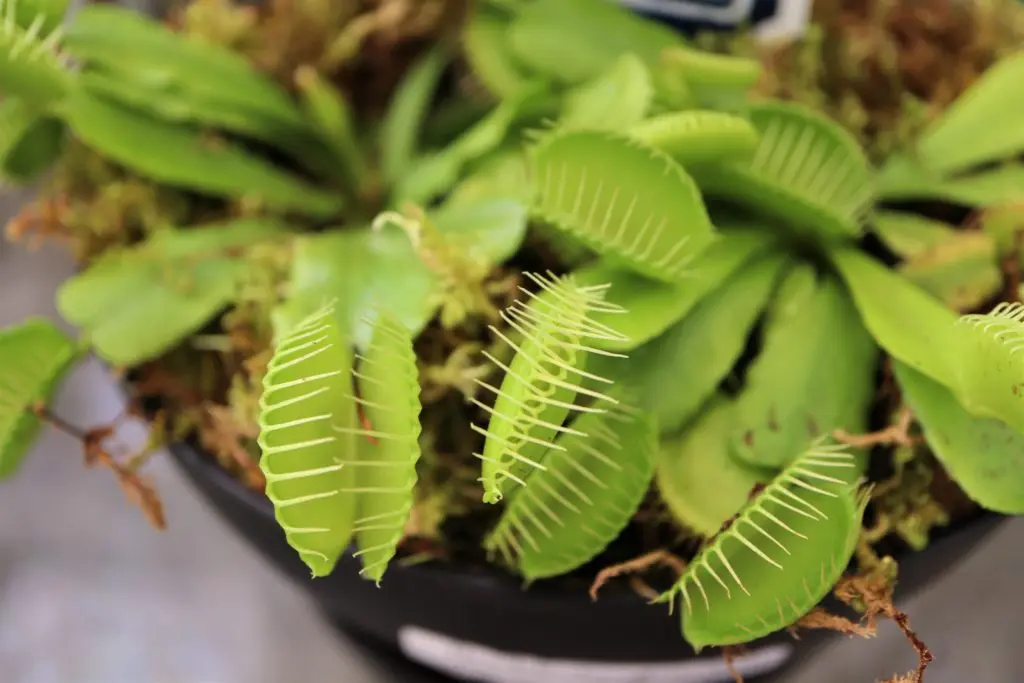by Amanda Rose Newton
Halloween is a holiday many live and die for. Christmas and Thanksgiving are wonderful, but they are often packed with obligations and additional stress. Halloween is the one holiday that manages to emphasize and celebrate FUN!

Unbelievably, Halloween decorations trump Christmas decoration sales in the retail world, meaning most of us are investing in having the spookiest trick-or-treat venue on the block.
Plants have a long history of all things creepy and scary, and the darker side of the flora world is the topic of this month’s Boozy Botanical Book Clubs selection, Wicked Plants by Amy Stewart.
Stewart muses over the sordid scandals and devious acts performed by members of the plant kingdom throughout history. While her focus rests mainly on toxic and dangerous plants, many everyday annuals, perennials, and shrubs feature spooky elements making them perfect to mix into your growing collection of Halloween décor.
If you get wistful for the Halloween season once it’s come and gone, you can keep it alive in a small way, with a few of the plants below.
Cautious Colors – Great Halloween Plants
Some colors just scream “do not touch” or “scary”. When adding plants to your Halloween arrangements, consider looking for bright pops of red, which often signify toxicity or black to give off major spooky vibes.
Bleeding Heart Vine (Clerodendrum thomsoniae): The name itself lends additional horror movie imagery, and the beautiful red and purple (or white) vining foliage is a must for many shady trellises.
Black Elephant Ear: Elephant ear, or colocasia, come in a variety of colors including black velvet– the perfect thing to slip into to get into the spirit.
Bat Flower (Tacca chantieri): If your party is inside, numerous indoor plants fit the spooky bill. This distinctive flower is black in color and vaguely resembles the creepy flying mammal.
Bat-winged Begonia (Begonia maculate): Resembling the wings of the bat, this dark green/black plant is distinguished by its spots and dramatic stature. Easy to grow, this is a great first plant for indoor plant newbies.
Creepy Carnivores
In the same way, you can’t turn away from a good horror movie, watching a carnivorous plant digest a fly takes the Halloween theme to a whole new level. Fun and easy to add to any home, they are especially fun to add as decorations for a seasonal party.

Venus flytrap (Dionaea muscipula): The classic flytrap does not need an introduction, making it an easy companion to any Halloween house party.
In need of a costume? A quick trip to Goodwill has you Little-Shop-of-Horrors-ready, and everyone will wonder why they didn’t think that of that.
Pitcher Plant (Nepenthes spp.): With so many to choose from, pitchers add a sinister element to any space. Consider adding our hanging basket, which dramatically features several pitchers hanging in the air, like a creepy chandelier.
Sundews (Drosera spp.): Perhaps the lesser-known of the carnivorous crowd, the sundew looks likes it should be from another planet, certainly not Earth! The perfect addition to your curio cabinet of oddities.
Spooky Stenches
Engage all of your guest’s senses by adding a smelly plant to the list of plant possibilities. A bonus? Most stinky plants are pollinated by Halloween’s creepiest insect, the fly!
Flies enjoy garbage, rotting meat, and fermenting fruit. Plants have become wise to this and use these pollinators to their benefit. You can always justify your questionable plant choice by saying you are helping wildlife thrive.
Voodoo Lily (Amorphophallus konjac): This bulby beauty has a fairly spectacular flower known for its corpse-like scent. If you are familiar with the true corpse flower, usually a proud display in botanical gardens, consider this the homeowner-friendly version. A must for many die-hard Halloween fan.
Phlox (phlox subulata): Have you ever noticed a skunky scent permeating from phlox? It is not just you! Phlox is famous for causing police to show up in homeowners’ yards wondering where they were hiding their cannabis plants.
White Stopper (Eugenia axillaris): Both white and simpson stopper are beautiful native shrubs with orange-hued bark. The one downside is the odor which, like the phlox, is a bit on the skunky side.
Society Garlic (Tulbaghia violacea): It would not be Halloween without garlic to keep away the vampires. Society garlic does have a distinctive garlicky odor, which will either make you want pizza for no reason or be extremely off-putting. Regardless, a great choice for color and height!


